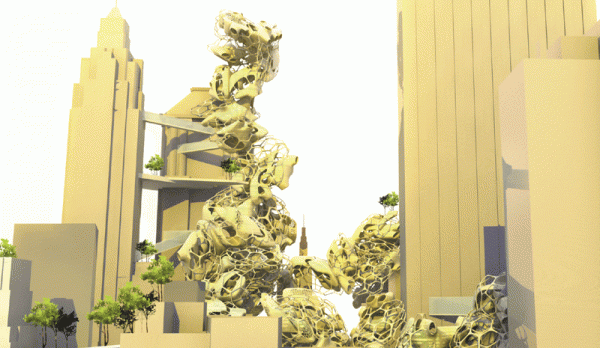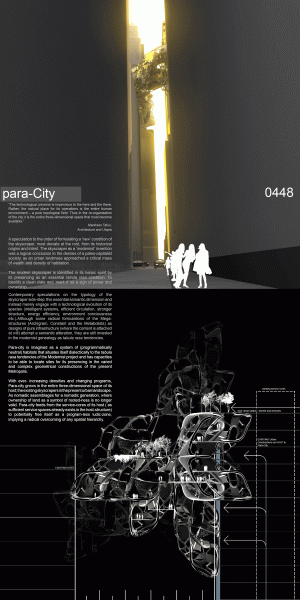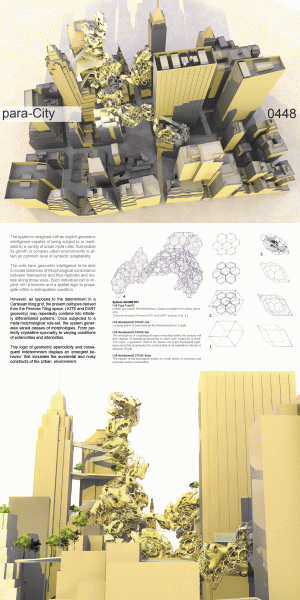1st Place
2007 Skyscraper Competition
Somnath Ray
India
The skyscraper as a ‘modernist’ invention was a logical conclusion to the desires of a paleo-capitalist society, as an urban landmass approached its critical point of wealth and density of inhabitants. Imagined as a sign of cultural power and ownership, the skyscraper was typified in its ‘classical heroism’ from its logically consequent tabula rasa condition; as a formulation for a utopian blank slate on which a new building is conceived, free of compromise or complication after the demolition of what previously stood on the site.
Any speculation to the order of formulating a ‘new’ condition of the ‘skyscraper’ must encounter this semantic intent and deviate from its historical tendencies. Contemporary speculations on the typology of the skyscraper side-step the essential semantic dimension and instead, merely engage with a technological evolution of its species (intelligent systems, efficient circulation, stronger structure, energy efficiency, environmental consciousness etc.). Although some radical formulations of the mega-structures, such as Archigram, Constant and the Metabolists, as designs of pure infrastructure, attempt a semantic alteration where the content is attached at will, they are still invested in the modernist genealogy by their tabula rasa tendencies.
Para-city is imagined as a system of programmatically neutral habitats that situates itself dialectically to the tendencies of the Modernist projects and has the capacity to locate sites and proliferate in the varied and complex geometrical and cultural constructions of the present Metropolis.
With ever- increasing densities and changing programs, Para-city grows in the entire three-dimensional space of its host; the existing skyscrapers of the present urban landscape. Para-city feeds on the service-cores of its host, since sufficient service spaces already exist within the host-structure, to potentially free itself as a program-less ludic-zone, implying a radical overcoming of any spatial hierarchy; an architectural assemblage for a nomadic generation, where work and play coincide in nebulous zones of continuously shifting technological and cultural flows.
Para city is explicit as a version towards a progressive utopia that seeks ‘play’ between the totalizing form of the city and organicist individualism. The ‘play’ suggested here has its origins in the idea of the ‘event’; “ the moment of erosion, collapse, questioning, or problematization of the very assumptions of the setting within which a drama may take place-occasioning the chance or possibility of another, different setting.” [as described by Foucault and further incorporated into the architectural discourse by Tschumi (Architecture and Disjunction)]. The future of architectural utopia is imagined in the facilitation of such play, implying a constant rupture and its immediate resolution… ad infinitum. An infinite feedback loop of perpetual anguish and its continual absorption.
















